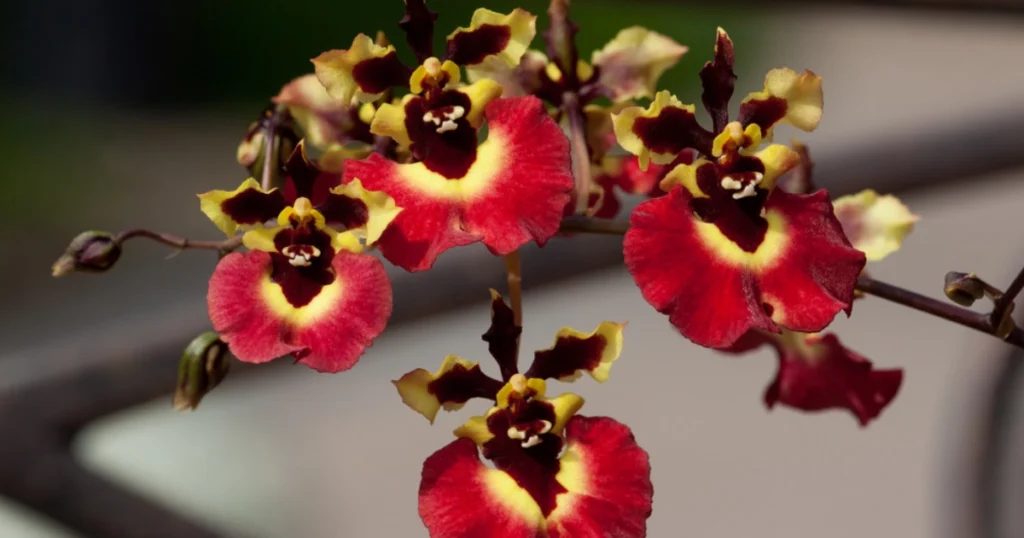Miniature orchids of the Tolumnia species, commonly referred to as Equitant Oncidiums, are native to the Caribbean and Central America. These little plants are highly appreciated by orchid fans for their stunning, colorful, and long-lasting flowers in a variety of hues, including yellow, orange, red, and purple. Here are some crucial maintenance instructions to make sure your Tolumnia orchids thrive:
Light
Because these orchids prefer bright, filtered light, it’s ideal to put them close to an east or west window that receives several hours of direct sunlight each day. However, it’s essential to keep them out of direct sunlight because it can burn the leaves.
Water
Tolumnia orchids prefer a continuous damp environment that is not soggy. It’s advised to water them once or twice a week, depending on the humidity conditions in your home. The potting mix must be allowed to gradually dry out between waterings; however, avoid letting it dry out completely.
Humidity
High humidity is ideal for tolumnia orchids, with a suggested range of 60 to 70%. If the air in your home is dry, you might want to use a humidifier or put a tray of water close to the plant to increase the humidity.
Growing Medium
These orchids require a potting soil that drains well and holds moisture without becoming soggy. For these orchids, a combination of bark, sphagnum moss, and perlite works well.
Fertilizer
Your Tolumnia orchids require frequent fertilization with a balanced, water-soluble fertilizer that has been diluted to half strength. Feed them every two weeks when they are growing and once a month when they are dormant.
Repotting
Every two to three years, or as soon as the potting soil has deteriorated and become compacted, repot your Tolumnia orchids. Select a pot that is marginally larger than the one you previously used, and use a potting mix that drains well.
Air Circulation
Tolumnia orchids need sufficient air circulation to keep healthy and stop the growth of fungus. Place them in a room with good ventilation in your house.
Pruning
To promote new growth and additional blooms, trim the flower spikes back to the plant’s base after the plant has completed blooming.
Propagation
orchids can be multiplied by means of keikis, or baby plants, which develop at the parent plant’s base. The keikis can be gently removed and potted up in their own containers after they have grown roots.
Pests and Diseases
Tolumnia orchids are typically resistant to pests and diseases, however if kept in very moist or humid environments, they may become prone to fungus infections. Making ensuring the potting mix is well-drained and avoiding overwatering will help to lower the danger of fungal diseases.
In conclusion, Tolumnia orchids require minimal maintenance and can provide a magnificent display of blossoms for many years. You’ll be able to enjoy an abundance of lovely blossoms by giving them bright, filtered light, a well-draining potting mix, high humidity, regular fertilizer, and good air circulation. To determine which growing circumstances are best for your plants, don’t be afraid to experiment. If you need assistance, you can also ask other orchid aficionados or gardening professionals for advice. Your Tolumn will last as long as you take good care of it.

